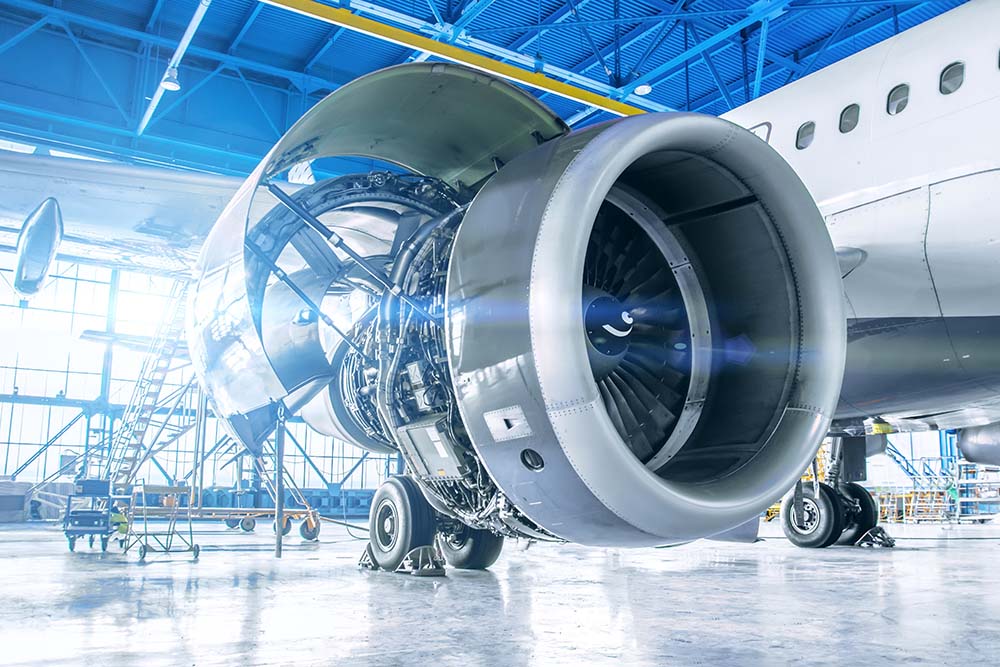 What is the aerospace industry?
What is the aerospace industry?
The aerospace industry is the term used to refer to the work of numerous companies and organizations dedicated to the construction, testing, and maintenance of air and space vehicles.
The global aerospace market reached nearly $298 billion in value in 2020 and is expected to grow at a rate of 7.7% to $430.9 billion in 2025
Although the pandemic, which spurred supply chain problems and labor shortages, and world events, such as the Russian invasion of Ukraine, have upended the aerospace industry, experts see some promising trends on the horizon.
Here are eight trends to watch for in the aerospace industry:
1. Consumers want to travel. Eager to make up for time lost during the pandemic, Americans are eager to book travel flights. After 2020 hit the books as the worst year ever for air travel, the travel industry is poised for a rebound.
Despite a setback from the Omicron variant in 2021, Americans show strong demand for air travel in 2022.
“We don’t view demand as anything more than delayed—we don’t think it’s diminished,” the new American Airlines Group Inc. President Robert Isom told analysts in February.
Alaska Air Group Inc. expects to be at pre-pandemic capacity by the summer of 2022. “I know there’s inflation worries,” Alaska Air Group Chief Commercial Officer Andrew Harrison recently told the Wall Street Journal. “But it didn’t have the dampening effect on the economy of demand that we may have originally feared.”
2. Demand increases for fuel-efficient aircraft. As the price of jet fuel, and an emphasis on its environmental effects, grow, the demand for energy-efficient aviation is at an all-time high.
Airbus released three concepts for zero-emission hydrogen commercial aircraft that could enter service by 2035. Each concept relies on hydrogen as a primary power source.
3. Advanced materials offer advantages. Since its infancy, the aerospace industry has focused on developing stronger yet lighter materials. That search continues with new innovative materials, such as graphene, a thin carbon-based material used to make lightweight, durable, rechargeable batteries.
Here are four material categories coming into their own in aerospace machining and fabrication:
- Heat-resistant and lightweight alloys. Although traditional aluminum is still a big part of aerospace machining, titanium aluminide (TiAl) and aluminum-lithium (Al-Li) can withstand high temperatures and help the thrust-to-weight ratio in aircraft engines.
- Composite materials. The three primary types of composite materials include carbon fiber, glass, and aramid-reinforced epoxy. According to Composites Manufacturing Magazine, carbon-fiber composite blends are the materials poised for the most growth. For example, the wings of the new Airbus A350 series are of more than 50 percent carbon fiber.
4. 3D printing offers advantages for parts and components. The aerospace industry uses 3D printing (also called additive manufacturing) to create strong, complex parts with reduced density.
According to a report published by Markets and Markets, 3D printing for the aerospace market is expected to grow beyond $3 billion by the end of this year, mainly due to a growing demand for 3D printed parts for aircraft engines.
5. Artificial intelligence (AI) and smart technology benefit the industry. The aerospace industry uses machine-learning algorithms to improve aircraft safety and manufacturing productivity.
Here are a few examples:
- GE Aviation uses machine learning and data analytics to increase the lives of engine components and reduce maintenance costs.
- Boeing has built machine-learning algorithms to automate factory operations and design aircraft.
- Researchers at the U.S. Air Force Research Laboratory are using machine learning to increase the speed of materials discovery and lower costs.
6. Supersonic flights to return to the skies. United Airlines has plans to purchase 15 new supersonic airlinersand have them in the air by 2029. Supersonic passenger flights ended in 2003 when Air France and British Airways retired the Concorde.
United’s deal with Boom Supersonic, a Denver-based company, is conditional on the new jets meeting safety regulations and noise pollution standards.
7. More resilient supply chains may result from pandemic woes. After being hit with shortages and long waits for parts, the aerospace industry is focusing on strengthening supply chains. These strategies include on-shoring, increased cyber defenses, vertical integration, implementing smart management systems, and using data analytics.
In a survey conducted by Deloitte, 72% of aerospace procurement industry executives said they are investing in supply chain ecosystems to leverage external alliance partners.
8. Autonomous flight systems may be part of our future. If we have driverless cars, can pilotless planes be far behind?
Many modern aircraft are already partly or fully autonomous. Scientists are expanding their work on aerial delivery drones, small air taxis, and even supersonic airliners and fighter aircraft that operate without the intervention or supervision of a human pilot.
We are likely to see commercial planes with just one pilot in the coming years as they gradually become fully autonomously operated over the longer term.
As a manufacturer for the aerospace industry, Skillcraft Machine Tool Co., Inc. prides itself on staying up to date on industry trends. Skillcraft manufactures high-quality support equipment, prototype components, and complex assemblies.
We specialize in producing small to medium size lots of parts and components in a variety of materials for a wide range of aerospace industry customers. Contact us today to discuss your next project.
